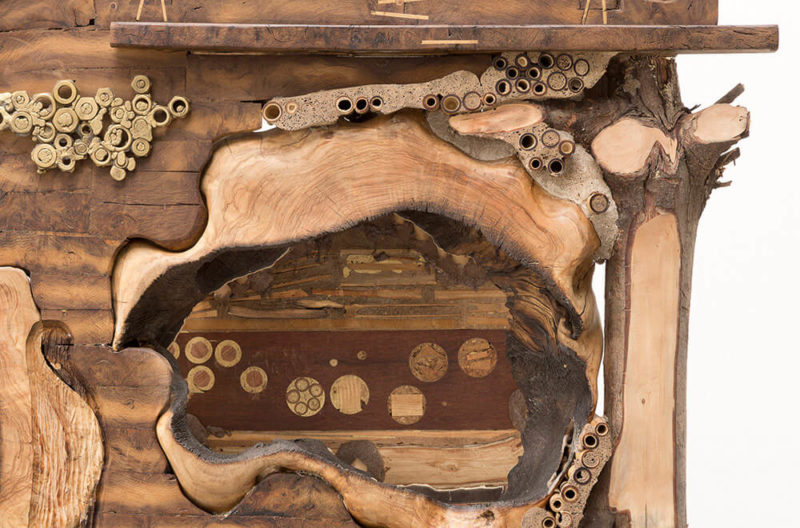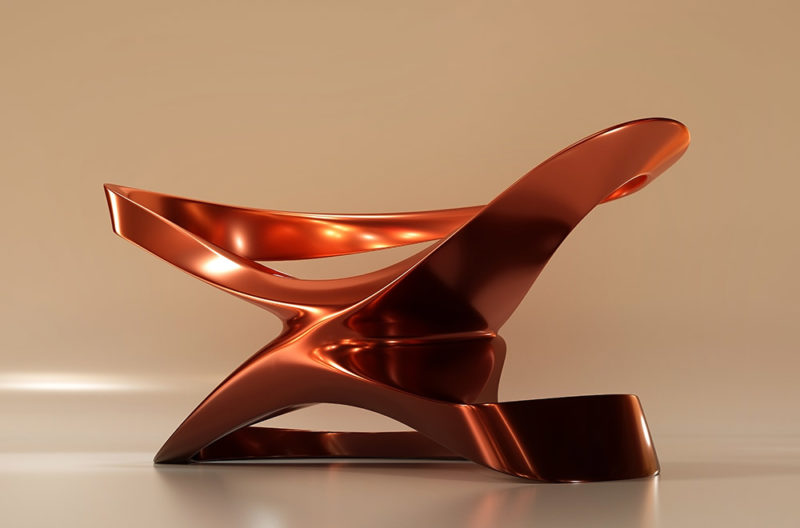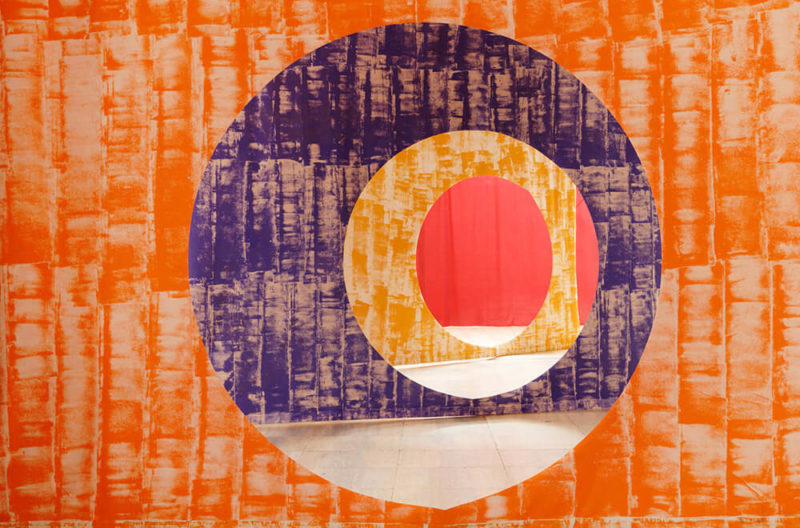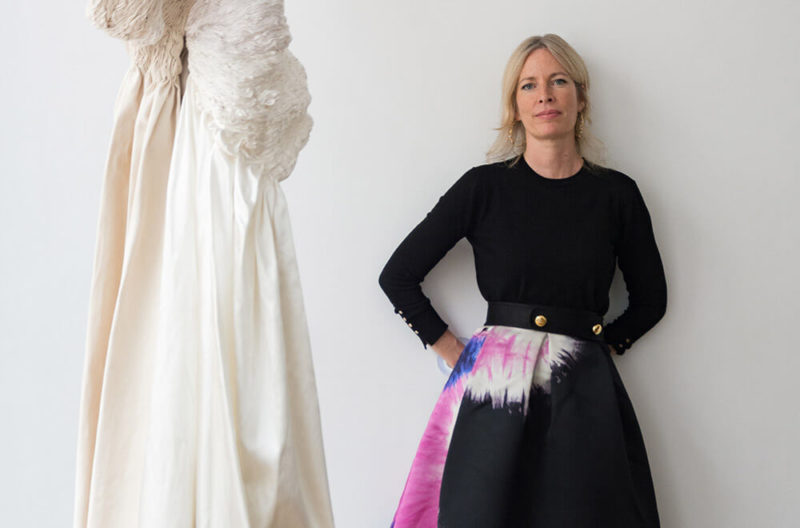Paris Dispatch / March 2021
Designers originating from Africa, Brazil, Denmark, the Netherlands, Chile and Greece exhibit their eclectic work in the French capital.
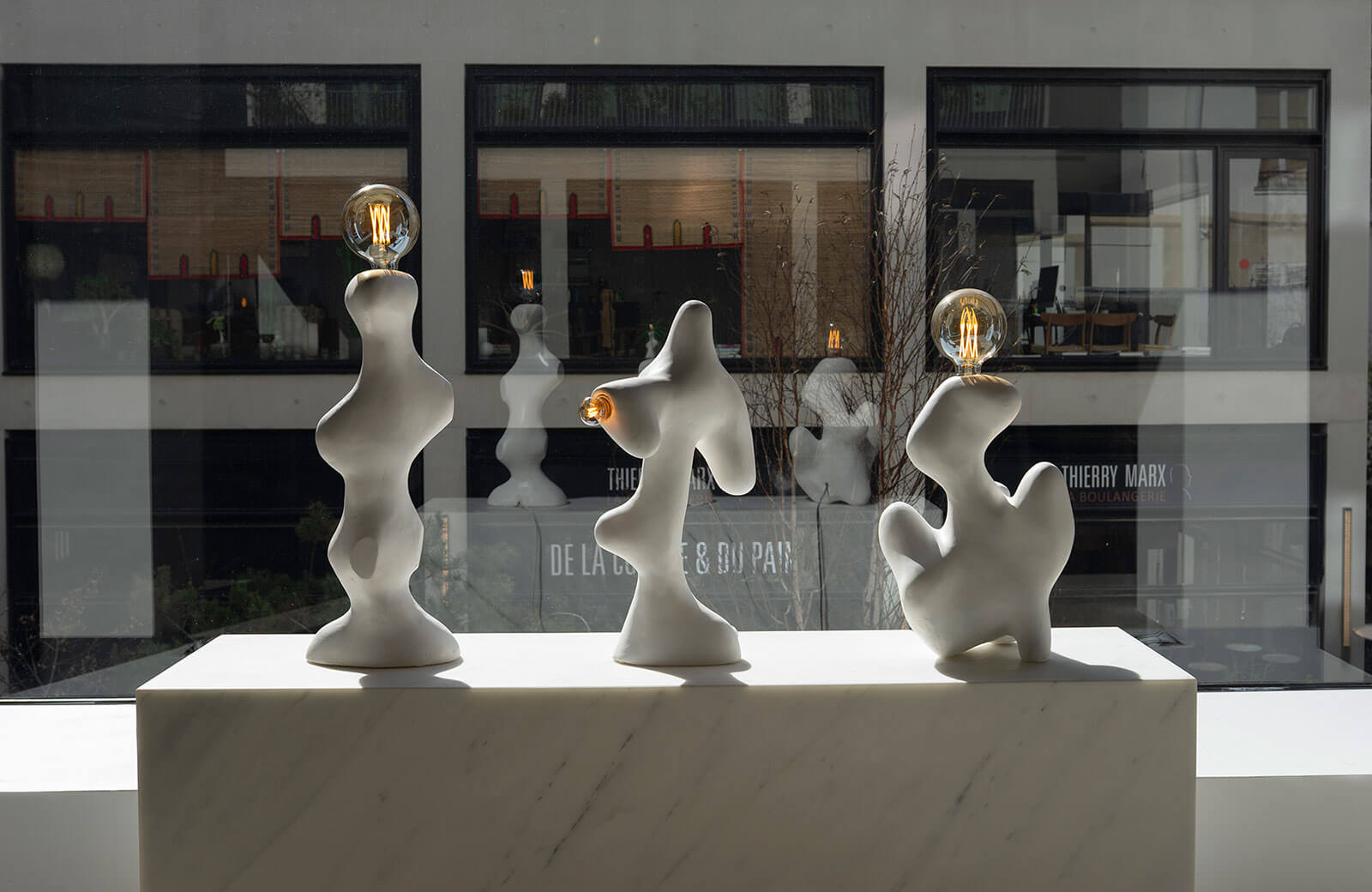
Lamps by Abel Cárcamo
COURTESY: Scène Ouverte
BEHIND CLOSED doors, as Paris faces lockdown once more, galleries are sheltering an array of vibrant spring shows. As they impatiently wait to reopen, The Design Edit offers a private view.
‘Colors of Abstraction II’ at 193 Gallery
“When I discovered Mondrian and Pierre Soulages, my two favourite artists, it was illuminating for me,” says Jean Servais Somian. He is standing next to his joyous furniture pieces, which are juxtaposed with paintings by Ghizlane Agzenaï and Valentina Canseco at 193 Gallery, founded by César Levy, in the Marais. His reference to Mondrian and Soulages alludes to his predilection for using primary colours and black in his practice.
The designer divides his time between Paris and Ivory Coast, where his studio is located. Besides his artistic language, the other distinctive characteristic of his work is the material – many of his creations are carved from the trunks of coconut palm trees. After hollowing out the trunk and sculpting the forms, Somian adds his signature touch by inserting holes that are then painted.
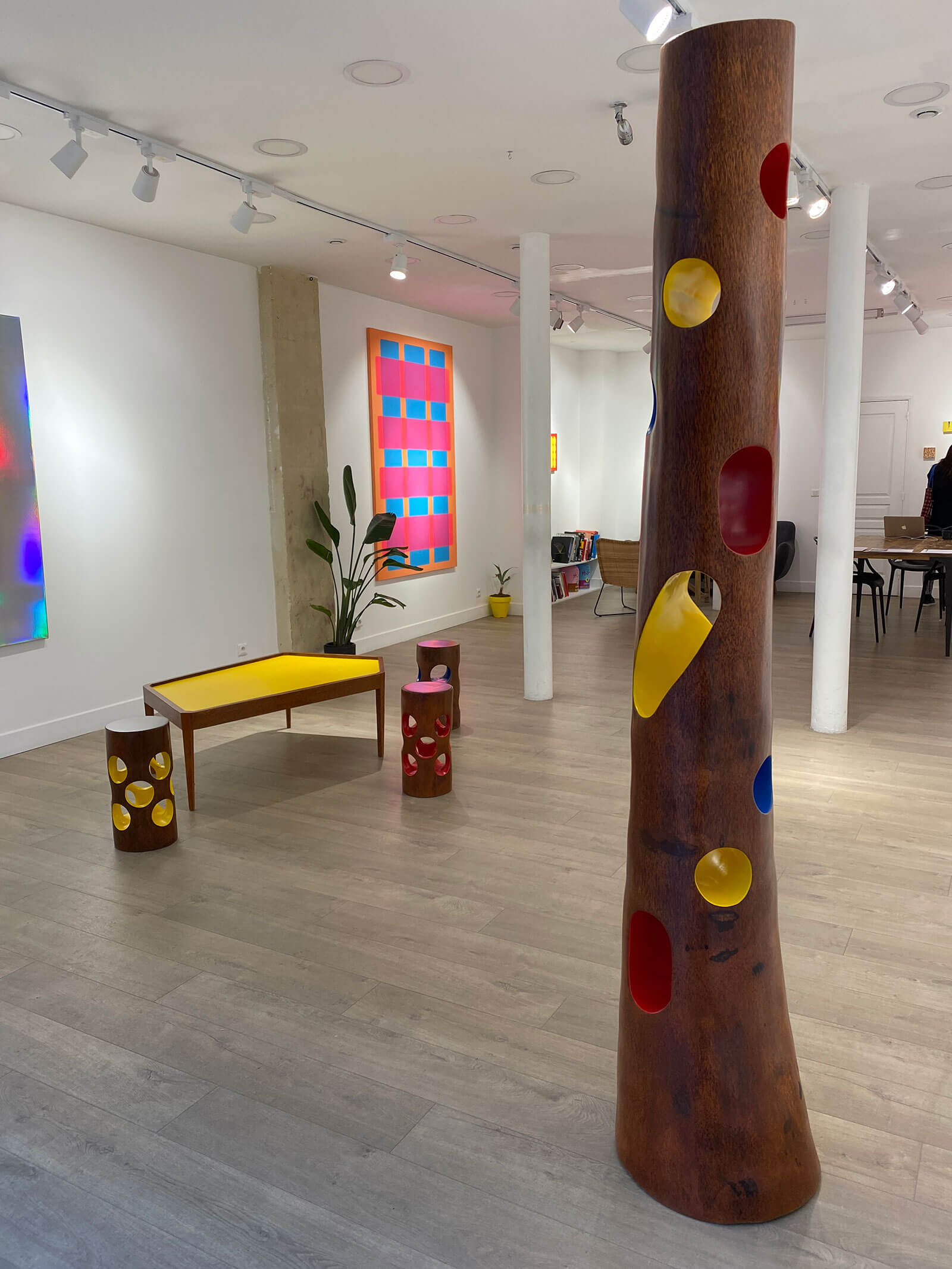
Exhibition view, ‘Colors of Abstraction II’ at 193 Gallery
COURTESY: 193 Gallery
On display are five new pieces: ‘Demoiselle à trous colorés’ – a tall, leaning “damsel” with coloured holes that recalls the original, swaying palm tree; ‘Tabouret Dentelle’ stools, the title evoking the lace-inspired pattern; and an asymmetrical table.
‘In a Slow Manner’ at Le Bicolore, Maison du Danemark
The Maison du Danemark, or House of Denmark, was inaugurated by the Danish embassy in the 1950s with the goal of creating a cultural platform for Denmark in France. Located on the Champs-Elysées, it has a second-floor exhibition space which reopened in February following an 18-month renovation after a fire sparked by a short circuit. It has been renamed Le Bicolore in reference to Denmark’s red-and-white flag.
To mark the reopening, the upcoming curator Henriette Noermark was given a carte blanche to organise a show on textile arts. It brings together works by ten artists, the majority of them women. “We feel that we need to make a statement about female artists and present a young curator,” Klaus Ib Jørgensen, the Danish embassy’s cultural adviser, says. The title of the exhibition derives from a quote from the German-born, American artist Anni Albers about her quest to “deal with textiles on a small scale, in a slow manner” – something that resonates with the slowness of time during the pandemic.
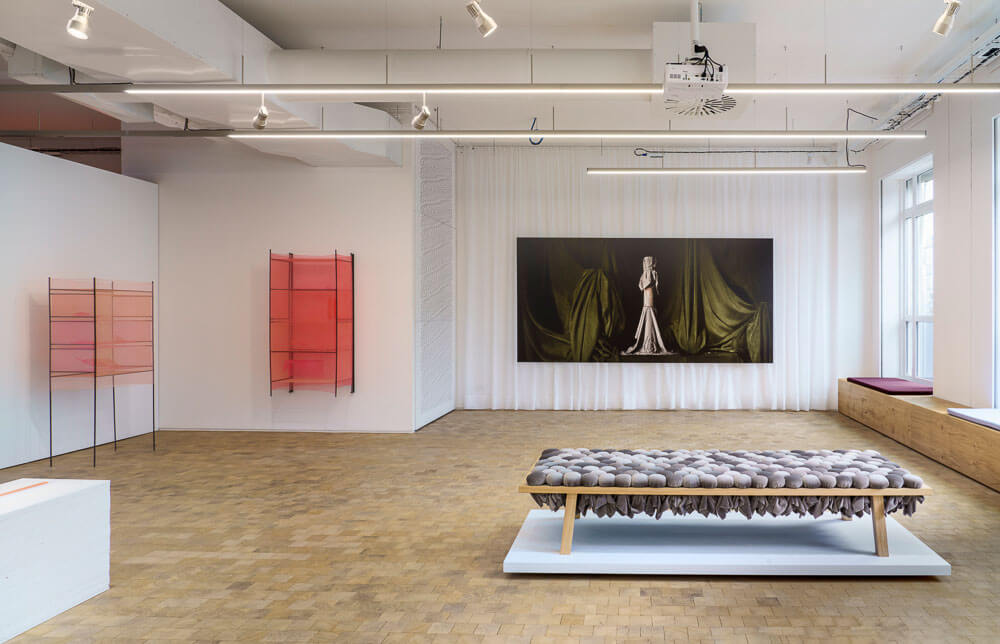
Exhibition view, ‘In a Slow Manner’ at Le Bicolore, Maison du Danemark
COURTESY: Maison du Danemark
An elliptical and tranquil mood permeates the show. What emerges is the intense level of research involved in the artists’ practices, even though some of the tactile pieces are far more arresting than others. A fresh discovery are two ethereal sculptures by Tove Storch. On geometric, metal structures linger delicate layers and shapes of pale pink and red silk fabric, combining the masculinity of metal and the fragile femininity of silk.
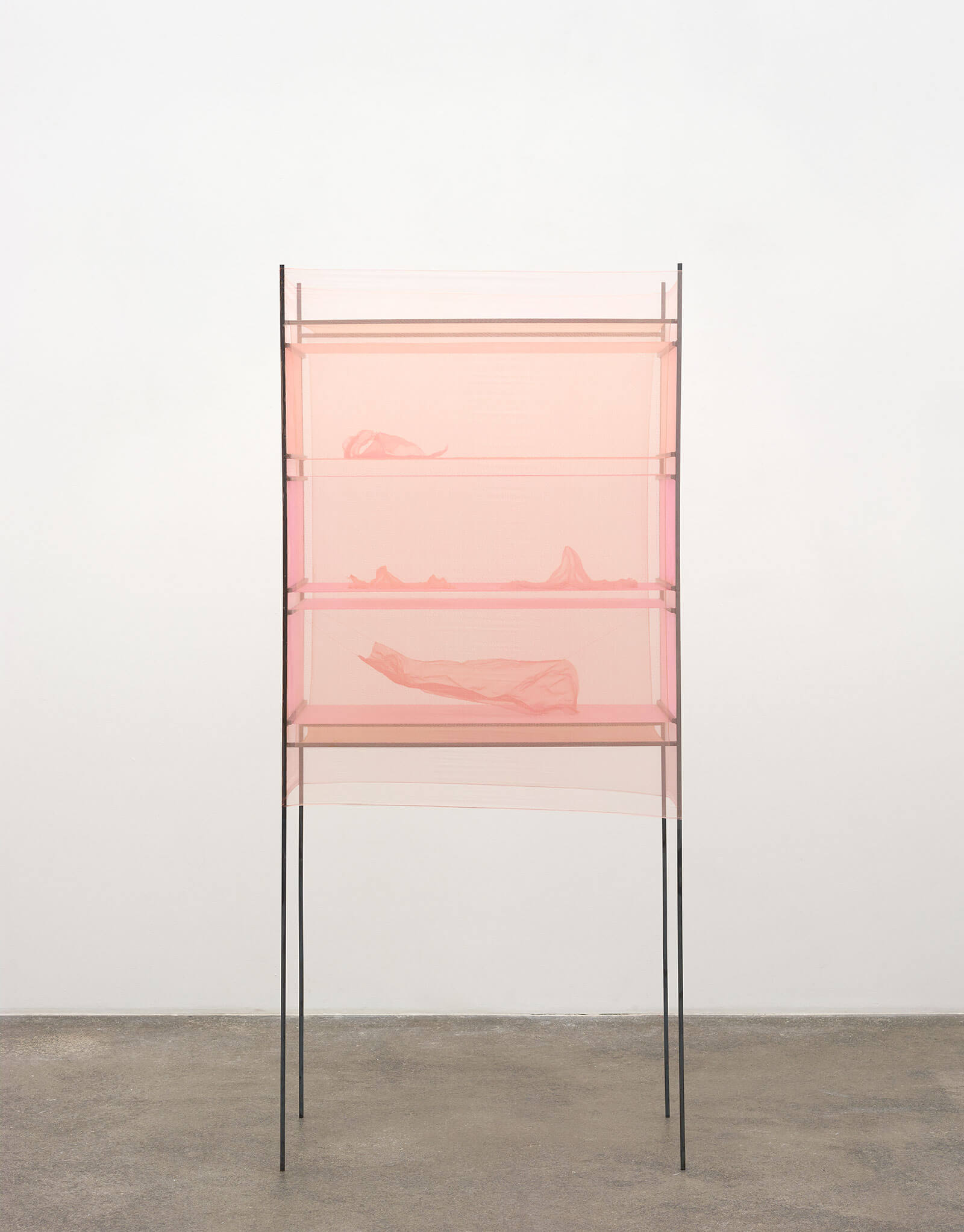
Tove Storch, ‘Untitled’, 2019
COURTESY: Trove Storch and NILS STÆRK, Copenhagen / PHOTOGRAPH: ©Malle Madsen
Vibeke Rohland and Justin Morin’s pieces reveal the influence of abstract art while several other artists are focused on exploring the qualities of fabrics. Familiar works by Ditte Hammerstrøm, Astrid Krogh and Grethe Sørensen on loan from Galerie Maria Wettergren are also featured.
Galerie Brésilienne at Paul Bert Serpette in the Paris flea market
Paul Bert Serpette, comprising two markets – Paul Bert and Serpette, is considered the most upscale part of the northern Paris flea market. Over the last year, the Marché aux Puces has lost out on revenue from the usual stream of American and European tourists – but this has not deterred some dealers from expanding their business. Indeed, Guillaume Andréani, a specialist in Brazilian modernist furniture, moved to a larger space in the enclosed Marché Serpette earlier this year. “We’ve missed the foreigners coming but the French still want to come and buy as soon as a lockdown ends,” Andréani says. “After staying at home for months, people want to change their décor.”
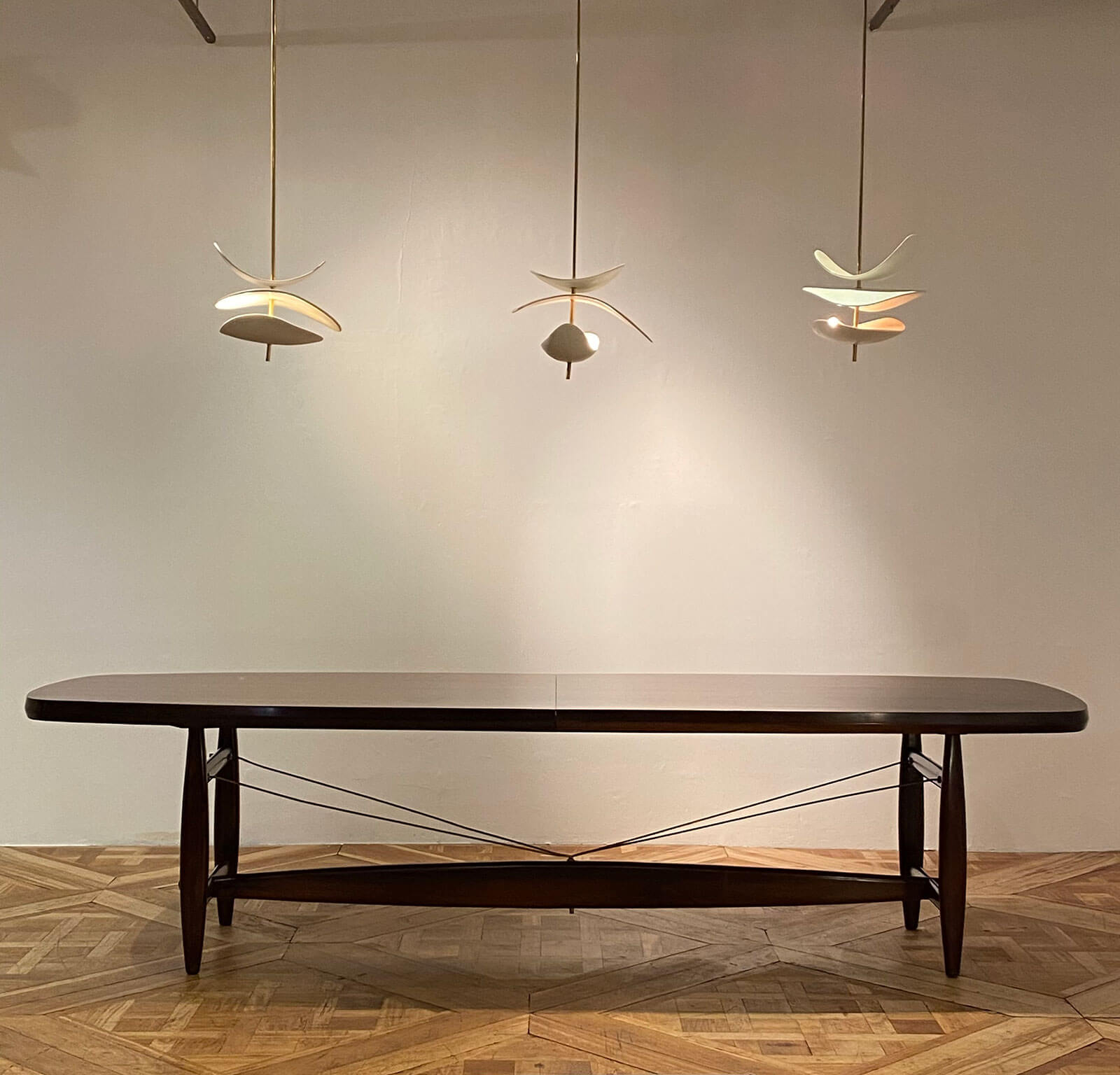
Sergio Rodrigues,‘Burton’ table, 1958
COURTESY: Galerie Brésilienne
Andréani has been trading in Brazilian design for a decade. “The forms of Brazilian modernist furniture are atypical and completely unlike what one discovers in French design,” he enthuses. “The pieces are fetching strong prices at auction and are fashionable at the moment.” A highlight is the ‘Burton’ table (1958) in imbuia wood (also known as Brazilian walnut) by Sergio Rodrigues. With a beam joining the legs and mast-like lines, it reveals the nautical inspiration of a sailing boat. This particular piece is unique and bears a stamp from Mercedes-Benz, which commissioned it for the conference room of its Brazilian director.
Nearby, a pair of pistachio upholstered armchairs by Martin Eisler and Carlo Hauner, the backrests exquisitely created from rows of wood and brass screws, typify how Brazilian design would marry woods with metal. Also on display is a rare version of Jorge Zalszupin’s octagonal ‘Mesa Pétala’ coffee table (1959 – 1965) with a white marble top. A similar one all in wood fetched €18,200 at Piasa in December.
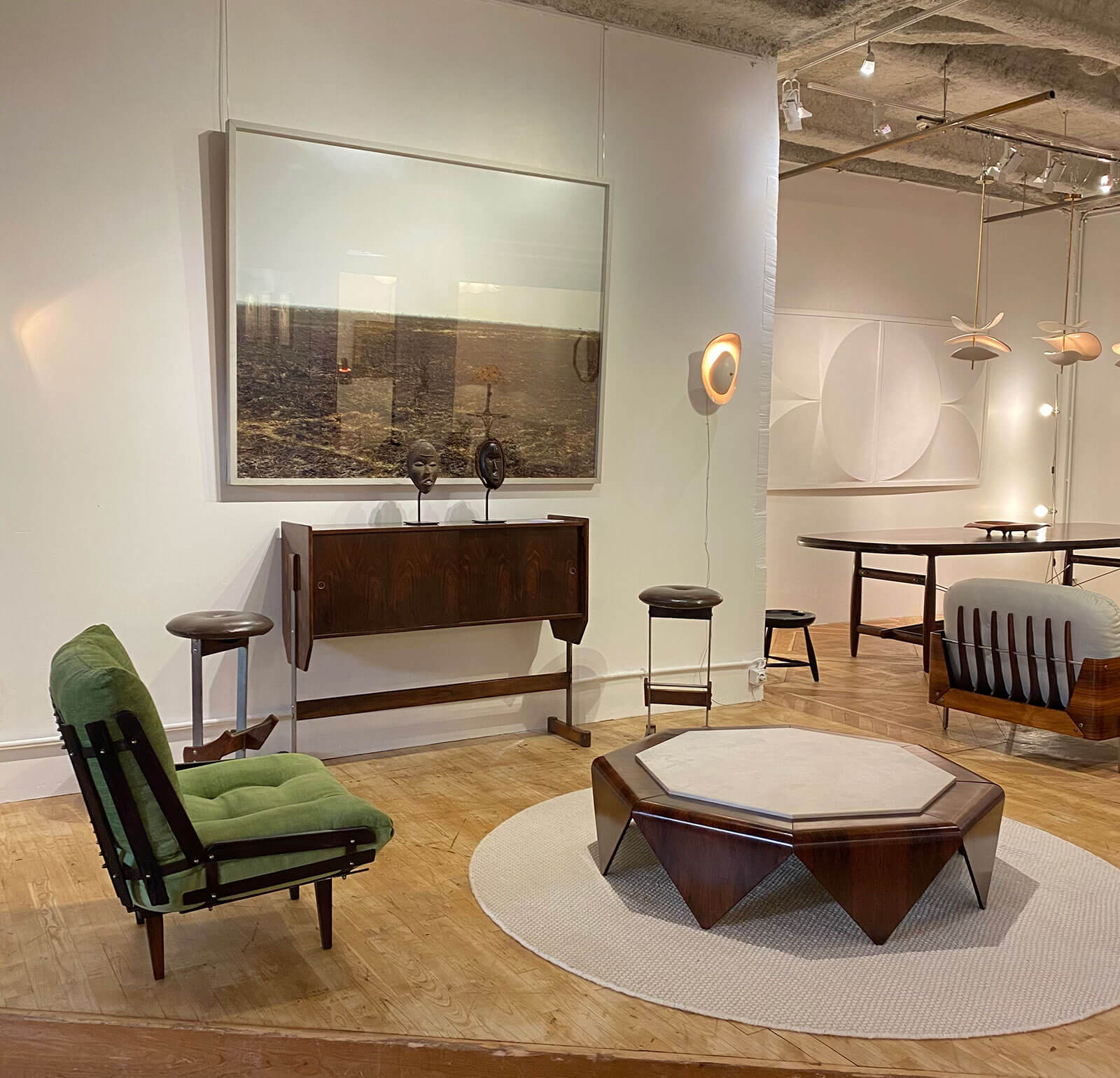
Exhibition view, Galerie Brésilienne
COURTESY: Galerie Brésilienne
Abel Cárcamo – Maarten Vrolijk at Galerie Scène Ouverte
“I’m painting with glass,” the Dutch designer Maarten Vrolijk says about his ‘Sakura’ handblown and sculpted glass objects exhibited at Galerie Scène Ouverte. “Just as you need to have a paint brush to make forms and colours in painting, I do the same with glass. When these works are shown with my paintings and ceramics, you can see my artistic handwriting.”
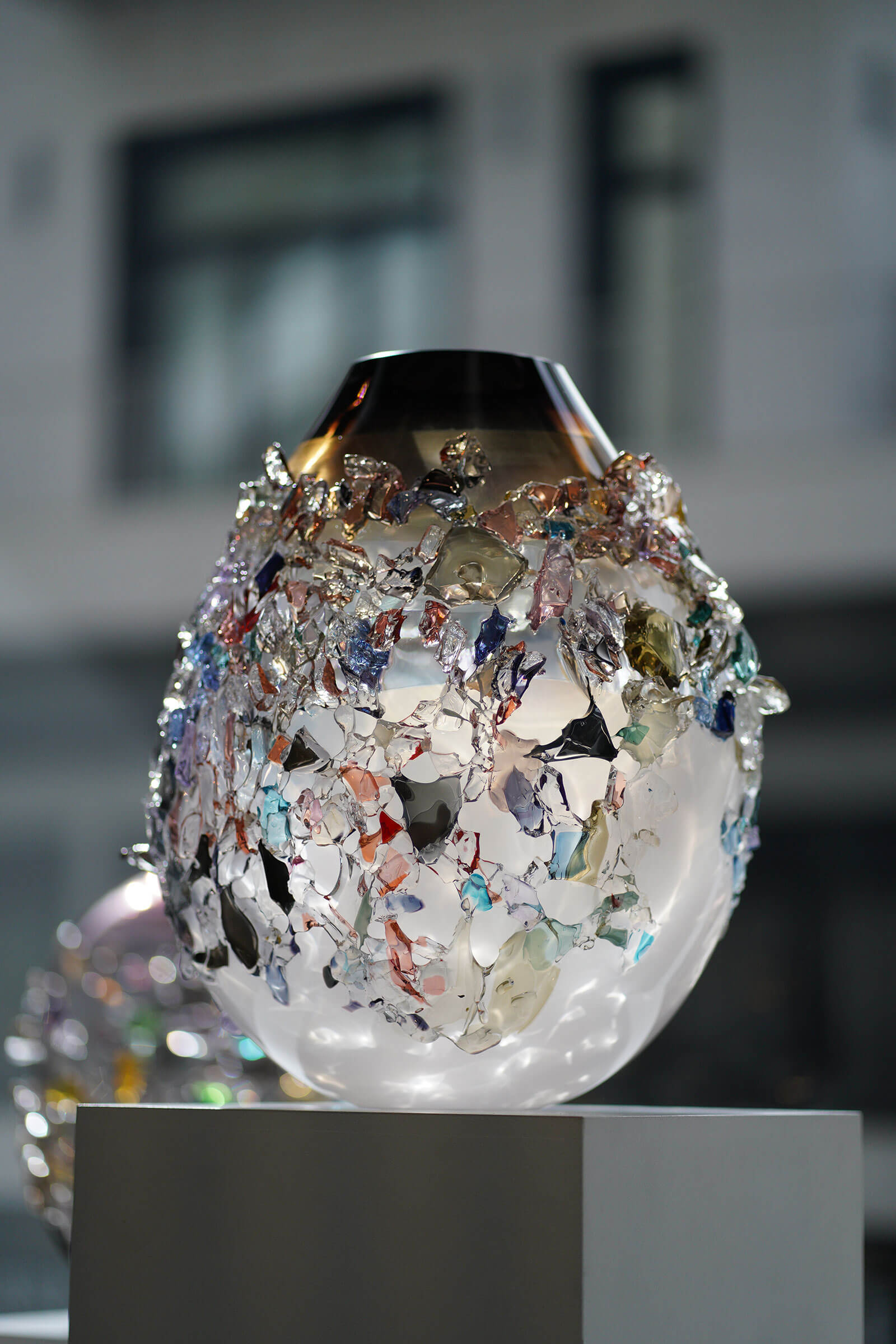
Maarten Vrolijk, ‘Sakura TRP20007’, 2020
COURTESY: Scène Ouverte
The bewitching oversized vessels in tonal gradations are lavishly encrusted with brightly coloured small shards sculpted from broken glass – an idea that grew out of Vrolijk’s fascination with how fragments of shattered glass glitter. Alongside these, Vrolijk is presenting paintings and ceramics that also convey his love of nature – specifically, flowers and Japanese cherry blossoms.
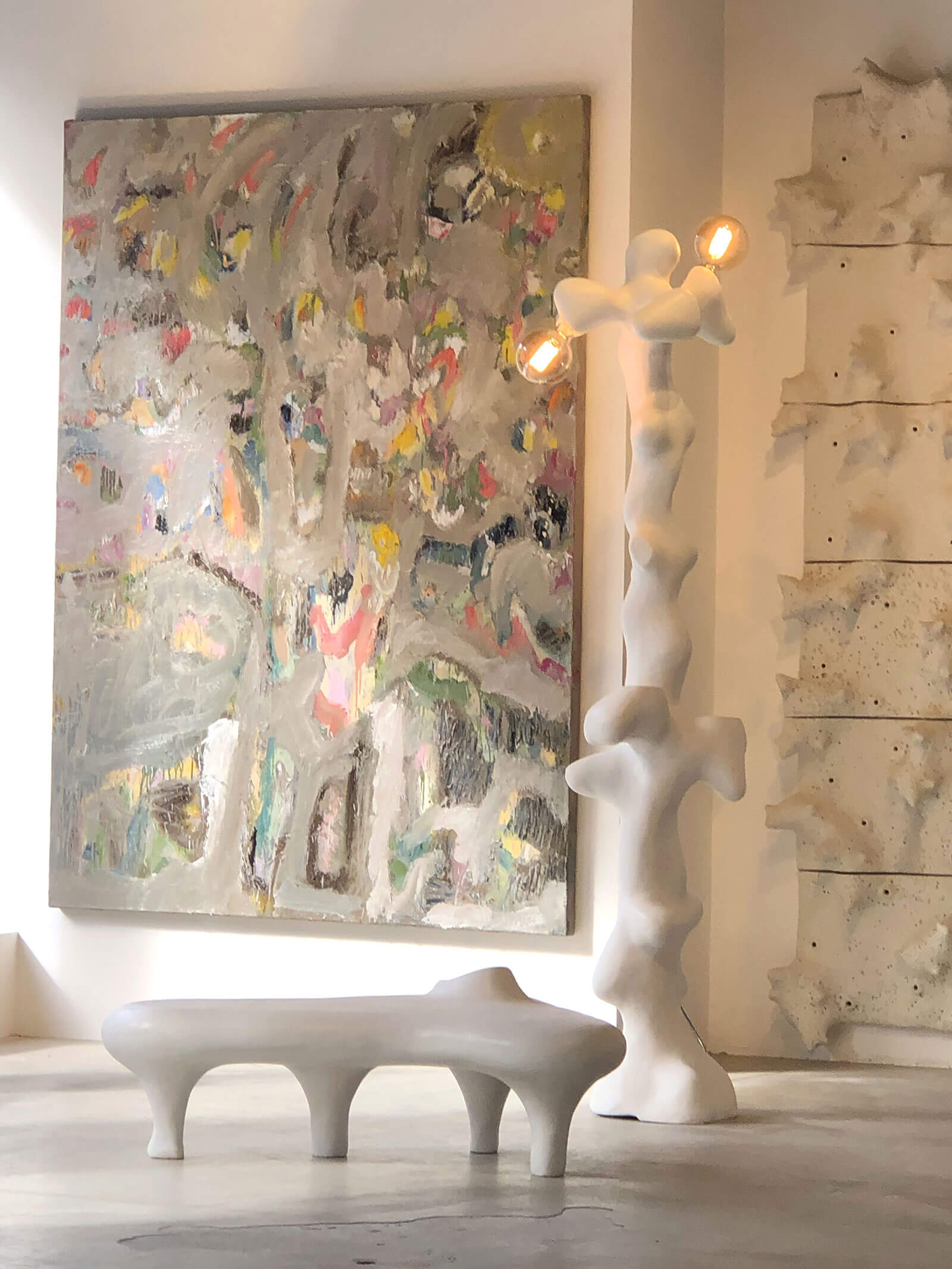
Exhibition view with furniture and lighting pieces by Abel Cárcamo and paintings by Maarten Vrolijk
COURTESY: Scène Ouverte
Elegant, monochromatic furniture and lighting objects in patinated bronze and marble by Abel Cárcamo, a young Chilean, Paris-based designer, are also on show. His works include lamp sculptures bearing the influence of Pre-Columbian and Latin American cultures as well as more organically shaped pieces. Each of them has been developed from a prototype made in plaster. “I started using plaster three years ago when I arrived in Paris and I like the flexibility and solidity that it lends to organic forms,” Cárcamo says.
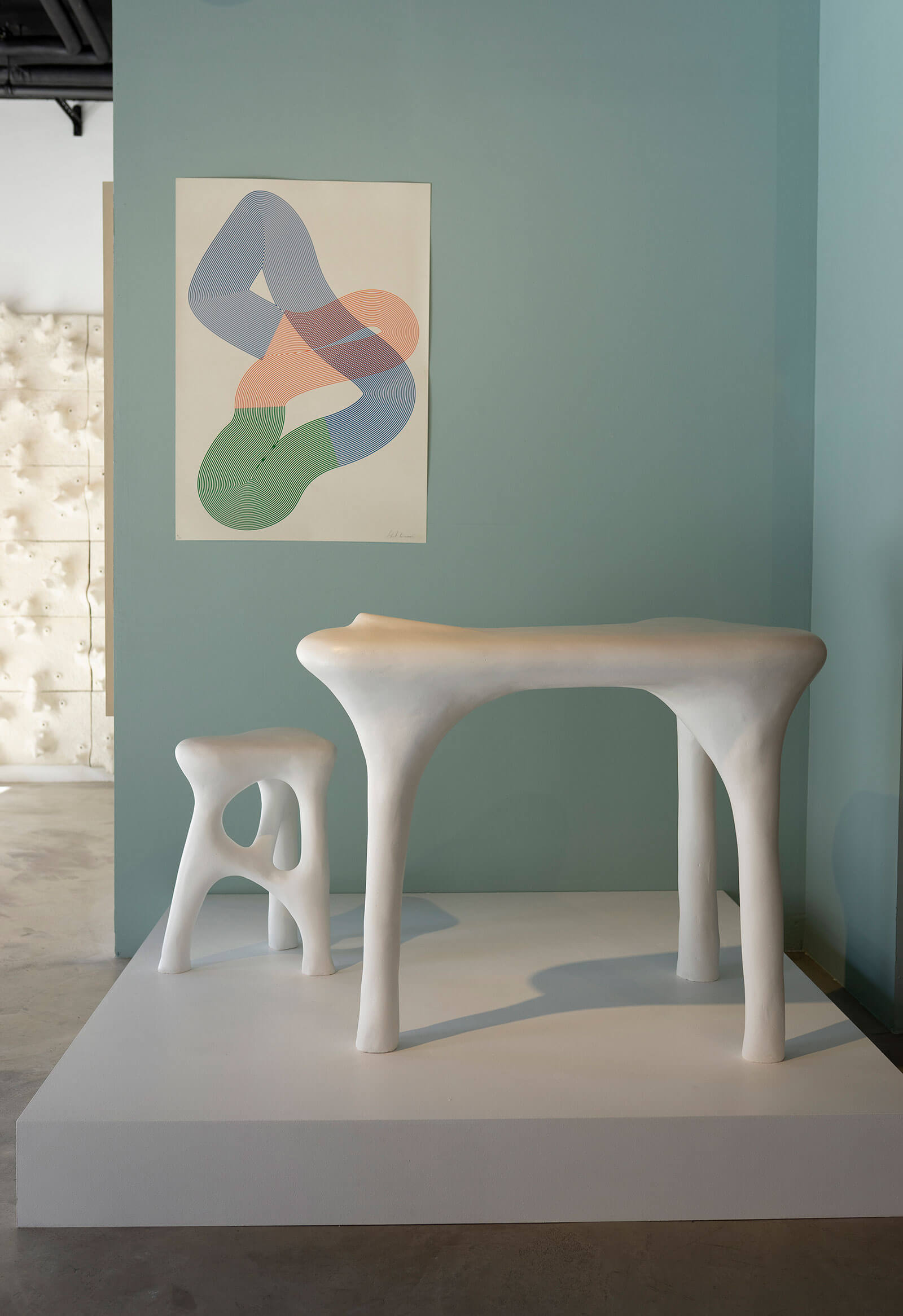
Abel Cárcamo with David Cárcamo, ‘Stool and desk’, 2020
COURTESY: Scène Ouverte
Kostas Lambridis at Carpenters Workshop Gallery
The first, highly anticipated exhibition of Kostas Lambridis at Carpenters Workshop Gallery reveals the Greek designer’s bold, dramatic and alchemical vision. Eclectic elements, from the historical and mineral to the discarded and high-tech, are merged together in furniture and lighting. Adopting a non-hierarchical order of incongruous materials, Athens-based Lambridis mines ideas from a rich medley of cultural references, including Ettore Sottsass’s ‘Carlton’ Memphis bookcase and Marc Newson’s ‘Lockheed Lounge’.
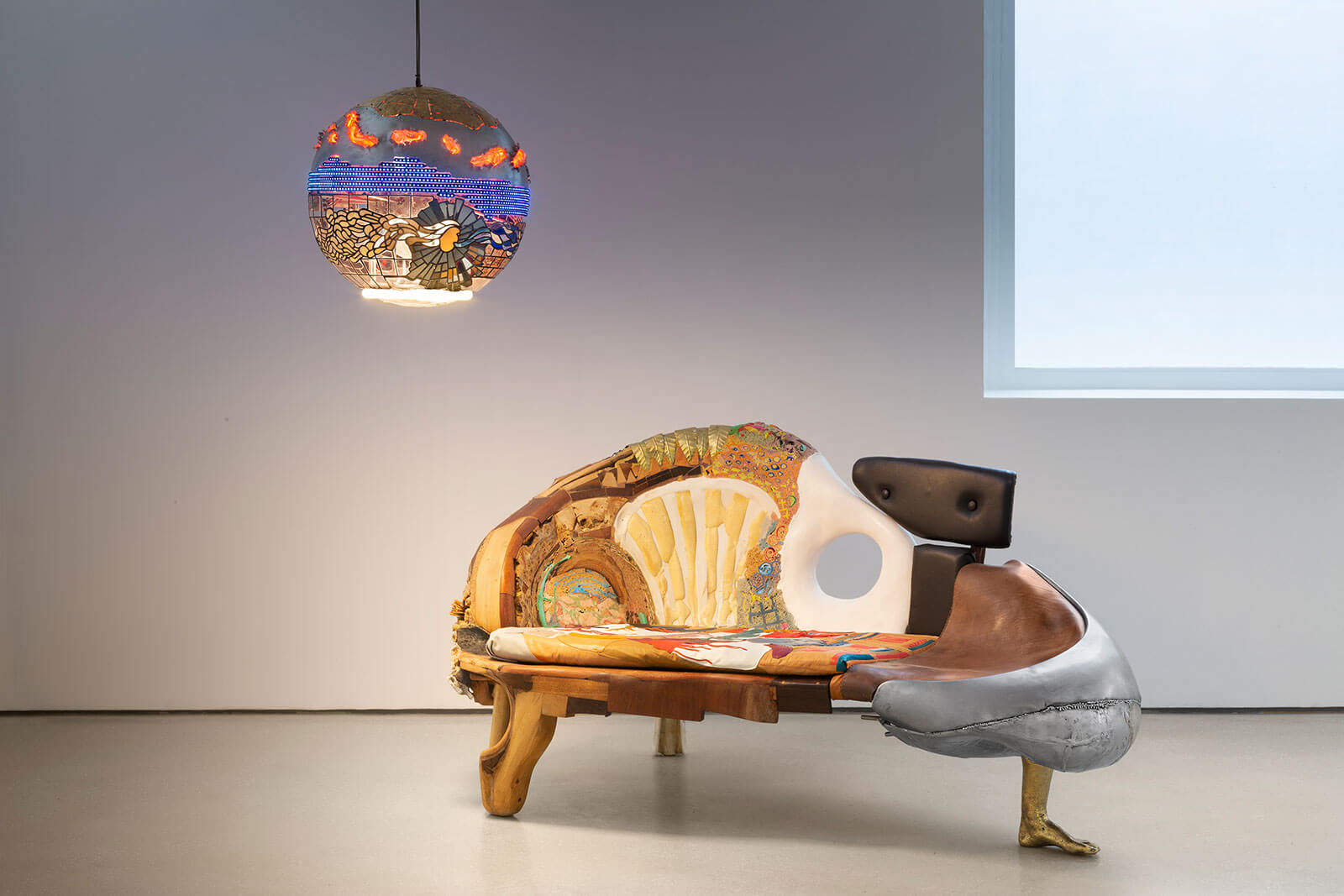
Kostas Lambridis, ‘Kepler 60-E’ light, 2020 (left); ‘Her’, 2019 (right)
COURTESY: Carpenters Workshop Gallery
The exhibition’s title stems from the oldest piece on show: the ‘Elemental Cabinet’ (2017), which was Lambridis’ graduation project at Design Academy Eindhoven. It is an irreverent reinterpretation of the incredibly ornate ‘Badminton Cabinet’, which was made in Florence in the early 18th century and now belongs to the Museum of Liechtenstein in Vienna. After travelling to Austria to see this masterpiece of Florentine craftsmanship, Lambridis made a same-scale replica from miscellaneous components inspired by Robert Rauschenberg’s ‘Combines’ and use of found objects.
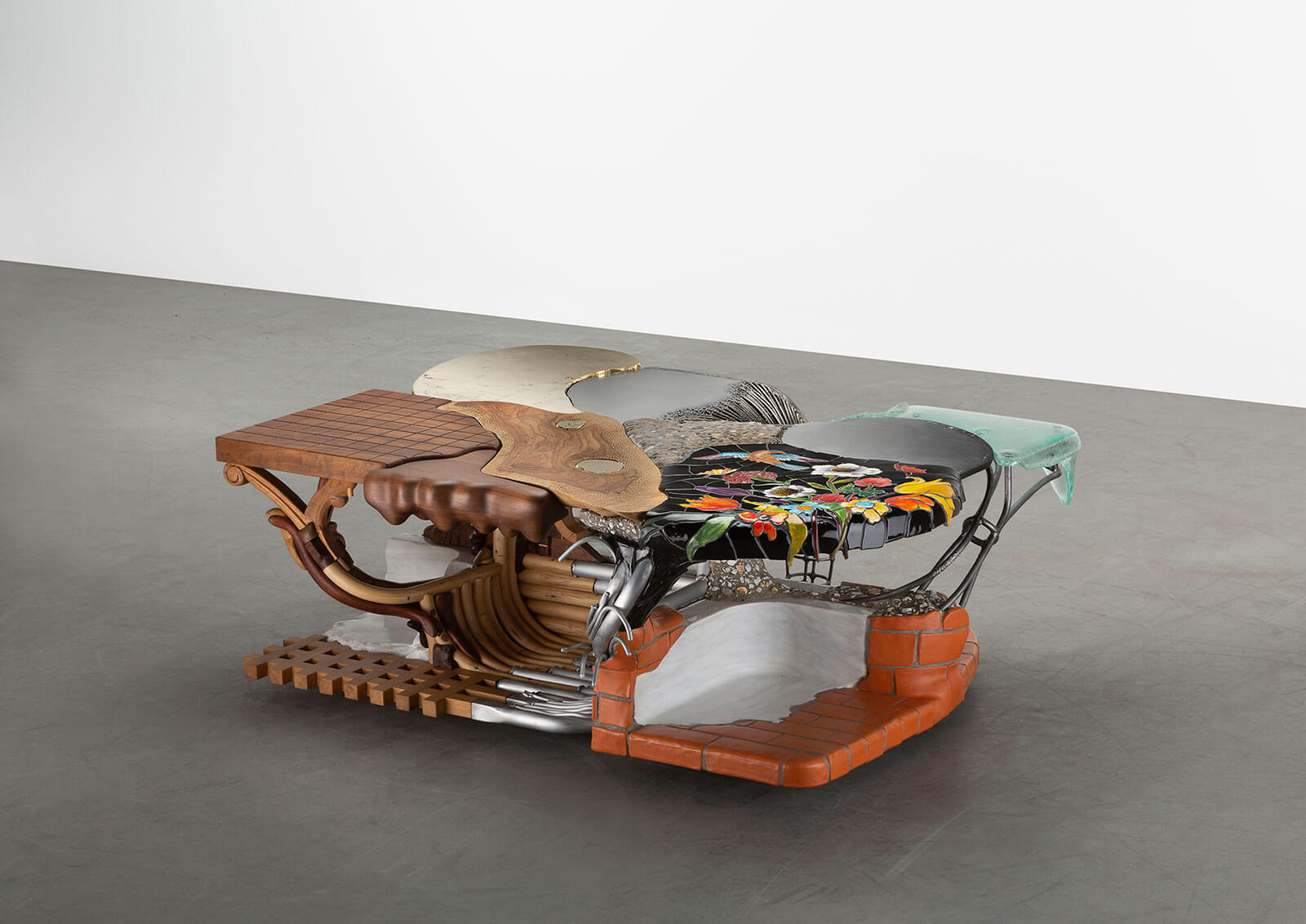
Kostas Lambridis, ‘Faux Baroque, 2021
COURTESY: Carpenters Workshop Gallery
This set into motion the principles of Lambridis’ practice. The last four years have been dedicated to riffing on baroque coffee tables, daybeds, chandeliers, table lamps and antiquities – always instilling a witty and egalitarian take on materials.
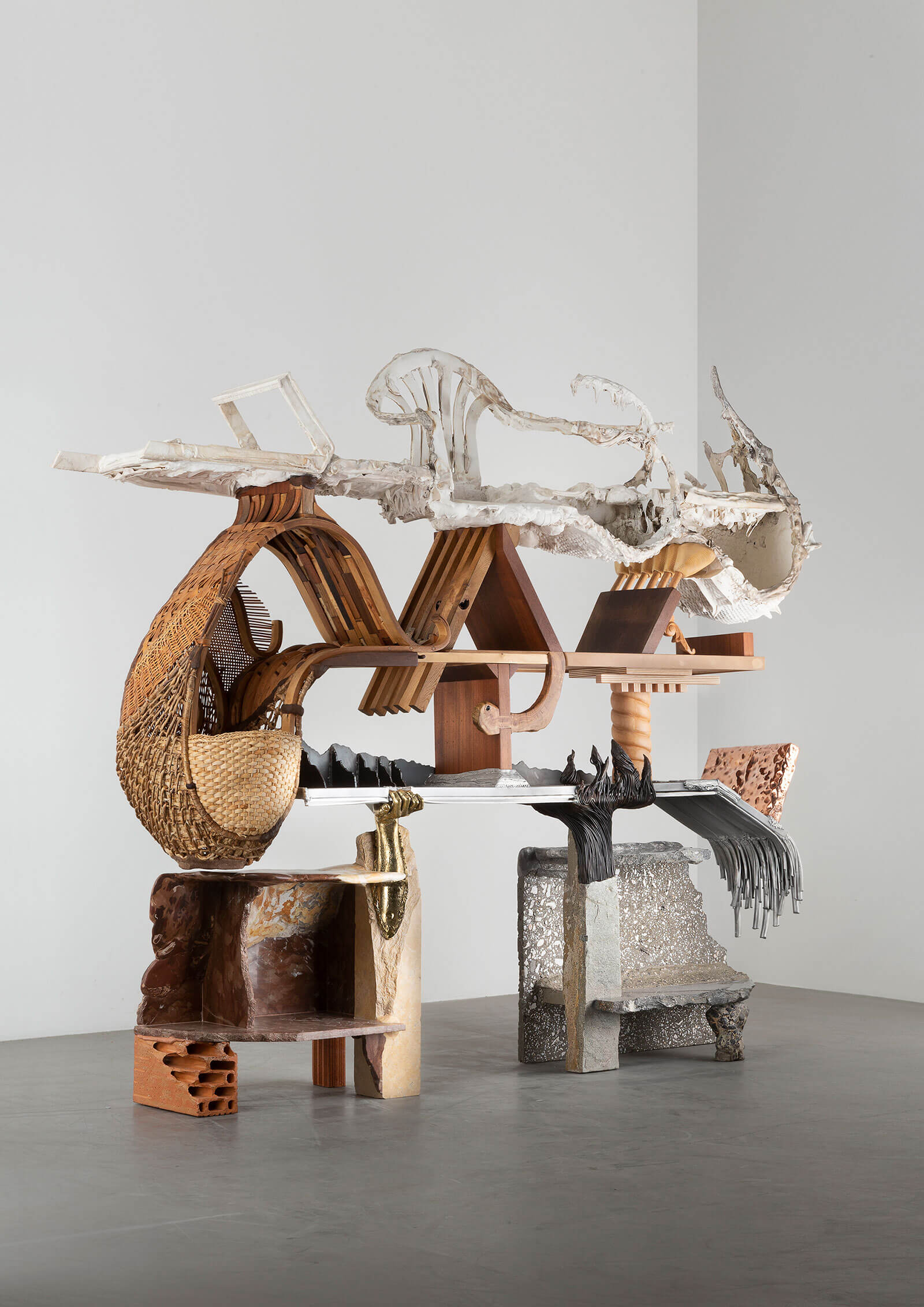
Kostas Lambridis, ‘It’s Not Enough’, 2020
COURTESY: Carpenters Workshop Gallery
“Pieces of stone and wood and remnants from car seats and throwaway furniture become fused with elements made by his studio”

Kostas Lambridis, ‘It’s Not Enough’, 2020 (detail)
COURTESY: Carpenters Workshop Gallery
“Lambridis has even included casts of his hand and his girlfriend’s foot, as well as leather patchworks and embroidered textiles created with his mother”
“The first two pieces of material are important because that suggests how the piece will be and then it just unfolds,” says Lambridis of his creative process. He places the heavier parts at the bottom of each layered work, the lighter parts at the top; the piece subsequently takes on a life of its own. “I’m there to give it some water as if it’s a plant, cut its branches and make it grow,” explains Lambridis, “Like a tree, it needs a lot of time, a lot of attention and a lot of love to create it.”
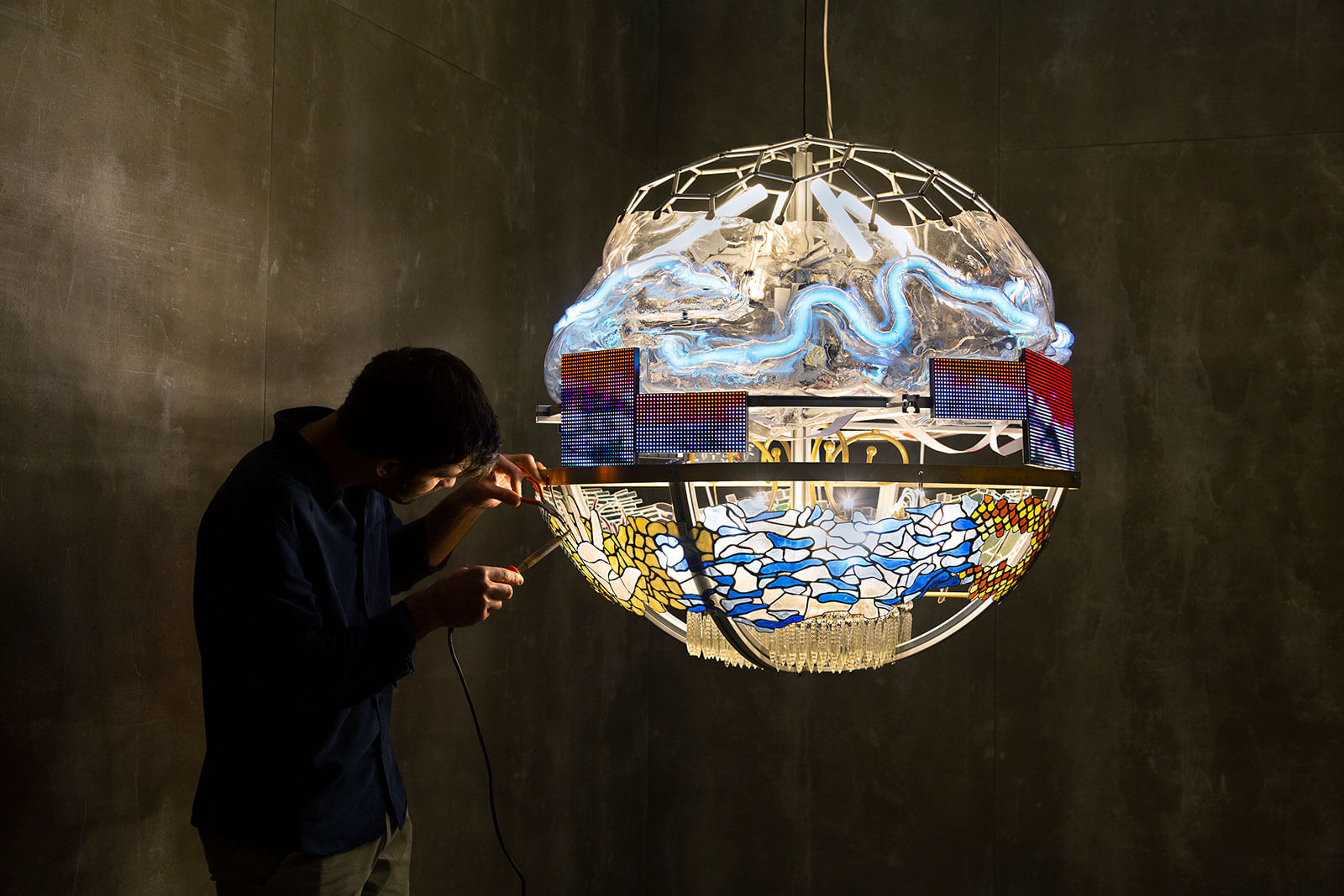
Kostas Lambridis working on ‘Jupiter’, 2019
COURTESY: Carpenters Workshop Gallery
These hybridised works also allude to something more philosophical: the desire for immortality versus the inevitability of entropy in relation to ancient Greece. “The glory of Athens is beautiful and decadent on one hand, but is dark and dying on the other – and these two things coexist in my environment,” the designer reflects.
Pulling these opposing forces together certainly leads to a wild exuberance.
Jean Servais Somian in ‘Colors of Abstraction’ at 193 Gallery, 7 Rue des Filles du Calvaire, 75003 Paris, France. Prices: €1,500-6,000.
‘In a Slow Manner’ at Le Bicolore, Maison du Danemark, 142 Avenue des Champs-Elysées, 75008 Paris.
Galerie Brésilienne at Paul Bert Serpette, the Paris flea market, 93400 Saint-Ouen. Prices upon request.
Abel Cárcamo – Maarten Vrolijk at Galerie Scène Ouverte, 53-57 Rue de Grenelle, 75007 Paris. Prices €3,000-22.000.
‘Elemental Folds’ by Kostas Lambridis at Carpenters Workshop Gallery, 54 Rue de la Verrerie, 75004 Paris. Prices upon request.




